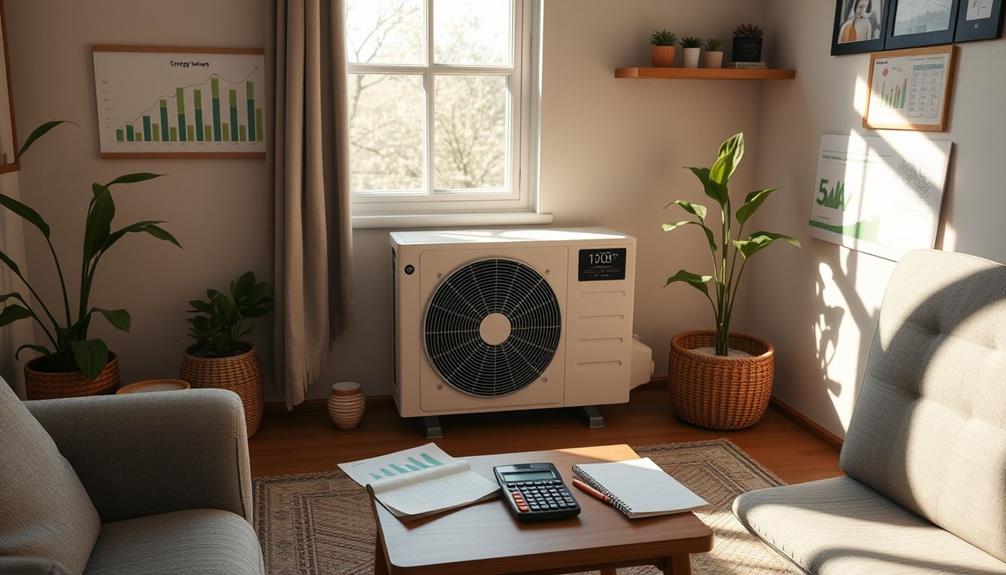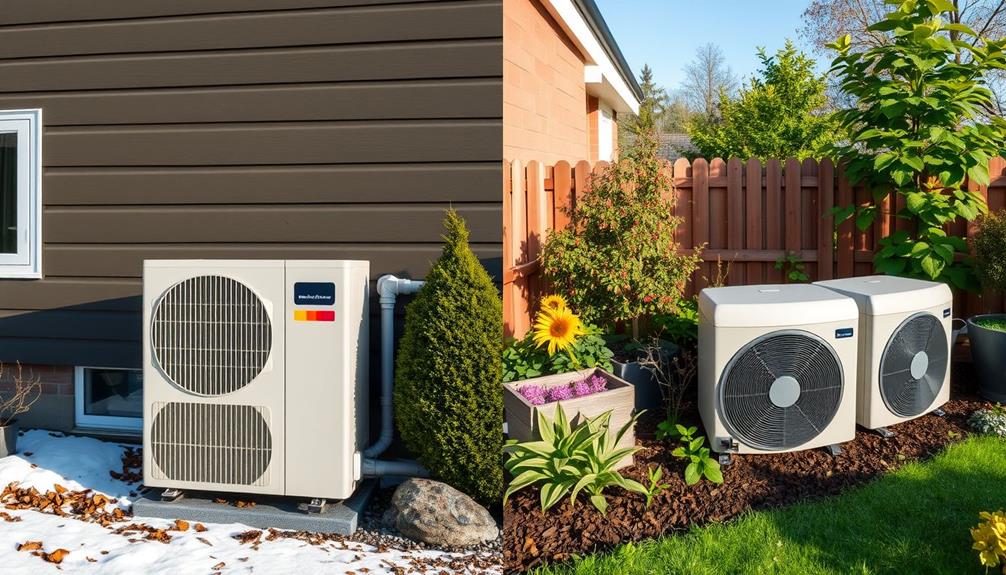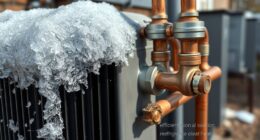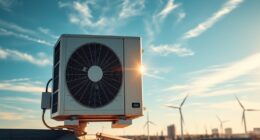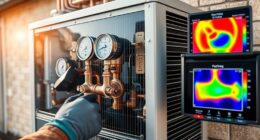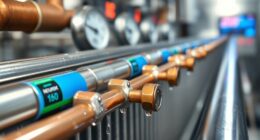To calculate your heat pump energy savings, start by checking the annual energy usage of your current heating system. Then, look at your heat pump's efficiency rating. You can compare them to see potential savings. Consider factors like your home size, insulation quality, and local climate, as they heavily influence energy demands. Typically, you might save around $370 a year, but some see savings up to $1,000. Take note of installation costs and federal tax credits, too. Understanding these factors prepares you for big savings, and there's plenty more to explore as you enhance your efficiency.
Key Takeaways
- Determine your current heating system's annual energy use to establish a baseline for comparison with a heat pump's efficiency.
- Calculate the heat pump's estimated annual energy consumption based on its efficiency rating, considering your home's size and local climate.
- Assess potential energy savings by comparing your current system's costs with the heat pump's projected energy expenses over a year.
- Factor in installation costs, including potential federal tax credits, to evaluate the overall financial impact and payback period.
- Review your home's weatherization quality and make necessary improvements to maximize the heat pump's efficiency and energy savings.
Understanding Heat Pump Energy Use
Understanding how heat pumps use energy is vital for maximizing their efficiency and savings. When you consider heat pump installation, it's important to know that these systems typically consume between 400 kWh to 22,500 kWh annually. The average heat pump uses around 5,475 kWh, comparable to powering nine full-size refrigerators!
This energy use can vary greatly based on your home size, climate, and insulation quality. Regular maintenance and correct installation are key factors that contribute to optimizing energy consumption, as the impact of maintenance can dramatically enhance the overall efficiency of your heat pump.
One of the standout features of heat pumps is their impressive energy efficiency. Operating at approximately 250% efficiency (sCOP 2.5), they produce more heat energy than the electrical energy they consume. This means for every unit of electricity, you can expect more than double in heating output.
To maximize your bill savings, you can achieve accurate energy use estimates through load calculations or by adjusting your historical energy bills based on efficiency ratings.
As you embrace home electrification, understanding these factors helps optimize your heating system's performance, leading to lower energy costs and greater comfort in your home.
Factors Influencing Energy Savings
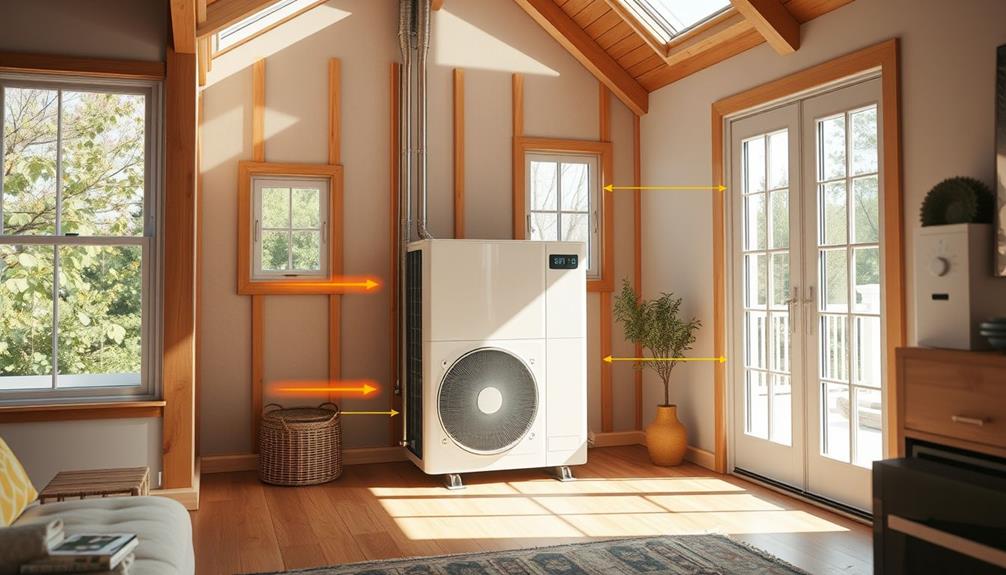
Several key factors influence the energy savings you can achieve with a heat pump. Understanding these elements can help you maximize your investment and enjoy greater comfort in your home. Additionally, the choice of building materials and the overall design of your living space can also impact efficiency, particularly in tiny house construction.
- Local Climate: Colder winters and humid summers can lead to increased energy demand. This means your heat pump has to work harder, affecting overall efficiency.
- Home Size and Layout: Larger or poorly designed homes typically require more energy for heating and cooling. If your space isn't optimized, you might see less savings.
- Weatherization Quality: Proper insulation and air sealing are essential. Well-insulated homes can dramatically lower heating and cooling needs, guaranteeing your heat pump works efficiently.
When you install a heat pump, consider its efficiency ratings, like sCOP and SEER. High-efficiency models can offer up to 50% savings compared to traditional systems.
Plus, the condition of your existing HVAC system and ductwork greatly influences energy savings, so make sure everything is in good shape. By focusing on these factors, you can enhance your home's energy efficiency and enjoy significant savings on your energy bills.
Estimating Costs and Savings
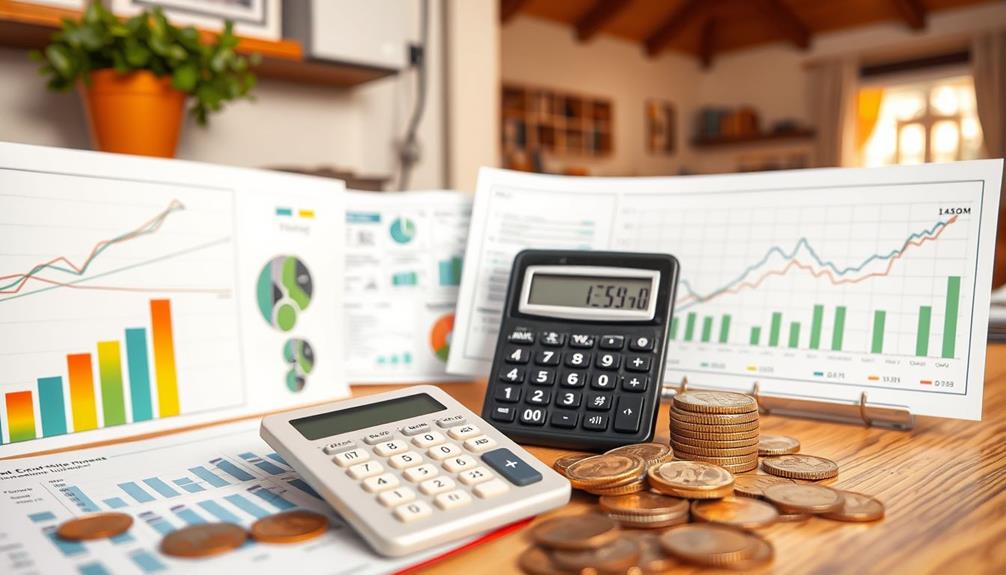
Estimating the costs and savings associated with a heat pump installation can seem intimidating, but breaking it down makes it manageable.
Start by comparing the annual energy use of your current heating system to that of the heat pump. Adjust for the heat pump's efficiency rating (sCOP) to determine your potential energy savings, which can be significant, especially when you consider the benefits of converting retirement accounts for long-term financial planning. Homeowners typically save around $370 annually, with some seeing up to $1,000 in reductions when moving from inefficient systems.
Next, consider the installation costs for heat pumps, which generally range from $3,500 to $8,000. Don't forget that federal tax credits can offset up to 30% of these expenses, enhancing your overall savings.
To calculate projected energy bill savings, multiply your expected annual kWh savings by your local electricity rate.
Keep in mind that the payback period for a heat pump installation is usually around 15 years, depending on your initial installation costs and the energy savings you realize each year.
Comparing Efficiency Ratings
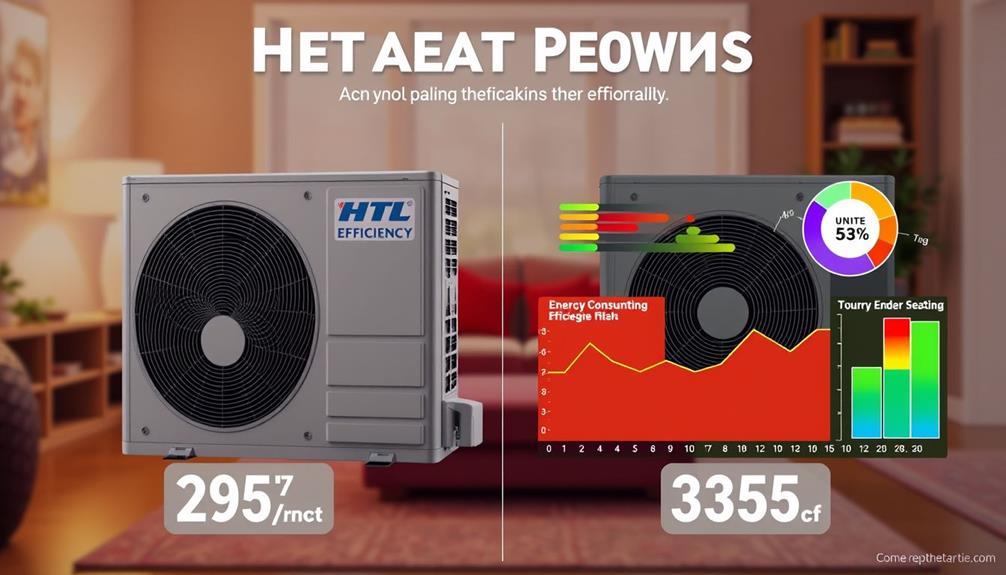
When evaluating heat pump installations, comparing efficiency ratings is key to maximizing your energy savings. Understanding both the Seasonal Energy Efficiency Ratio (SEER) and the Heating Season Performance Factor (HSPF) will help you choose the best system for your home.
By taking into account various factors such as assessing risks and rewards associated with different models, you can make a more informed decision.
- Potential energy savings of up to 50% with high-efficiency models.
- Cost savings from lower energy bills each month.
- Enhanced comfort in your home year-round.
SEER measures cooling efficiency, with ratings typically ranging from 14 to 20, while HSPF indicates how efficiently a heat pump heats your space. The higher the ratings, the lower your energy consumption will be, especially when compared to traditional electric resistance systems that only operate at 100% efficiency.
Look for ENERGY STAR certified heat pumps, which meet stringent efficiency criteria from the EPA, ensuring you get superior performance.
High-efficiency models can achieve efficiencies of up to 300% under ideal conditions, making them a smart choice for energy savings.
Long-Term Financial Benefits
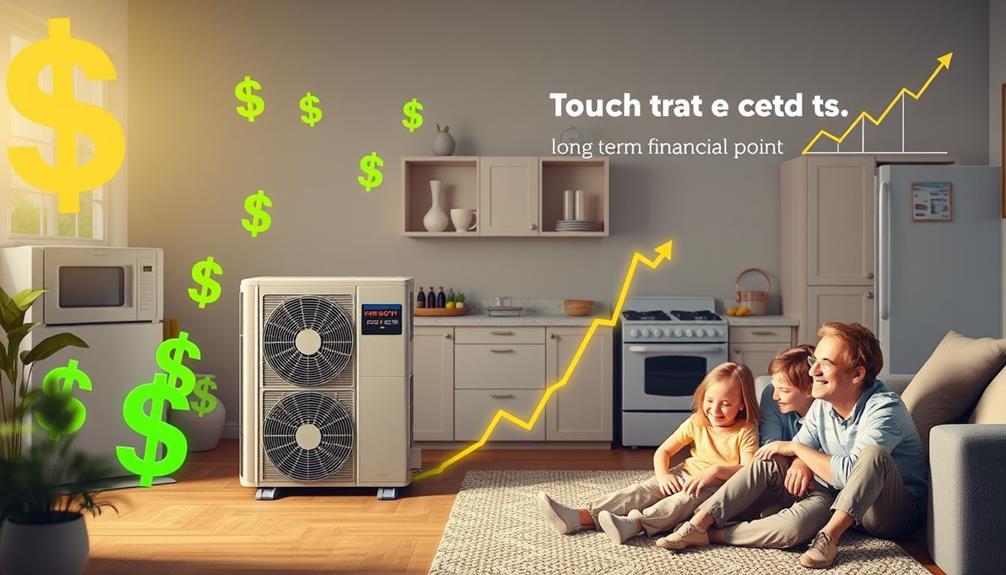
Investing in a heat pump can yield notable long-term financial benefits for homeowners. By upgrading to a heat pump, you could save an average of $370 on your annual energy bill, with some homeowners benefiting from savings as high as $1,000 when moving away from inefficient systems.
Credit cards play an essential role in personal finance management, allowing homeowners to finance such upgrades while managing their budgets effectively. While the installation cost of heat pumps averages around $16,000, the considerable energy savings can lead to a payback period of approximately 15 years.
Heat pumps are designed to reduce energy bills by 30-50%, providing you with significant financial savings compared to traditional heating and cooling systems. Additionally, you can enhance your savings by taking advantage of federal tax credits, which can cover up to 30% of your heat pump purchase and installation costs. This can greatly lower your upfront expenses.
Frequently Asked Questions
How to Calculate Heat Pump Energy Consumption?
To calculate your heat pump's energy consumption, find its wattage, multiply by operating hours, and convert to kilowatt-hours. Adjust for local climate and efficiency ratings to get a more accurate annual estimate.
Is It Cheaper to Leave the Heat Pump on All Day?
Keeping your heat pump on all day could save you 30% to 50% in energy costs compared to traditional heating. It's often cheaper to maintain a steady temperature rather than frequently adjusting your thermostat.
What Is the Most Economical Way to Run a Heat Pump?
To run your heat pump economically, keep a consistent temperature, use the appropriate mode for the season, maintain it regularly, consider solar power, and explore local rebates to maximize savings on your energy bills.
Is It Better to Keep a Heat Pump at a Constant Temperature?
Yes, keeping your heat pump at a constant temperature is better. It runs more efficiently this way, avoiding energy spikes. Frequent adjustments can lead to higher bills and discomfort, so set it and leave it.
Conclusion
By understanding your heat pump's energy use and the factors that influence savings, you can make informed decisions that feel like finding hidden treasure in your energy bills. Estimating costs and comparing efficiency ratings helps you see the long-term financial benefits clearly. With the right approach, you'll not only save money but also contribute to a greener planet. So, take the plunge and start calculating your heat pump energy savings today!
